

The goal of this master thesis was to conduct a study on how a reinforced concrete building that is to be demolished can be broken down into elements and how these elements can be used to construct a new building at a different location.
Motivation
high numbers of demolition and shredding of concrete buildings
high energy consumption of cement production
abandoned buildings in rural areas and outskirts
versus record numbers in new constructions in city centers

City Hall Ahlen
Case Study

For the case study I have chosen the town hall of the city of Ahlen. It was built in 1970 according to plans by Brigitte and Christoph Parade and is to be demolished in the next few years due to asbestos deposits and damage to the façade. According to a structural engineer’s report, the reinforced concrete structure is still completely intact.
First, the entire reinforced concrete structure – the core of the building – was analyzed. In the further course of the work, the focus was then primarily on the nine-story administrative wing and its floor plan based on a triangular grid




Cutting


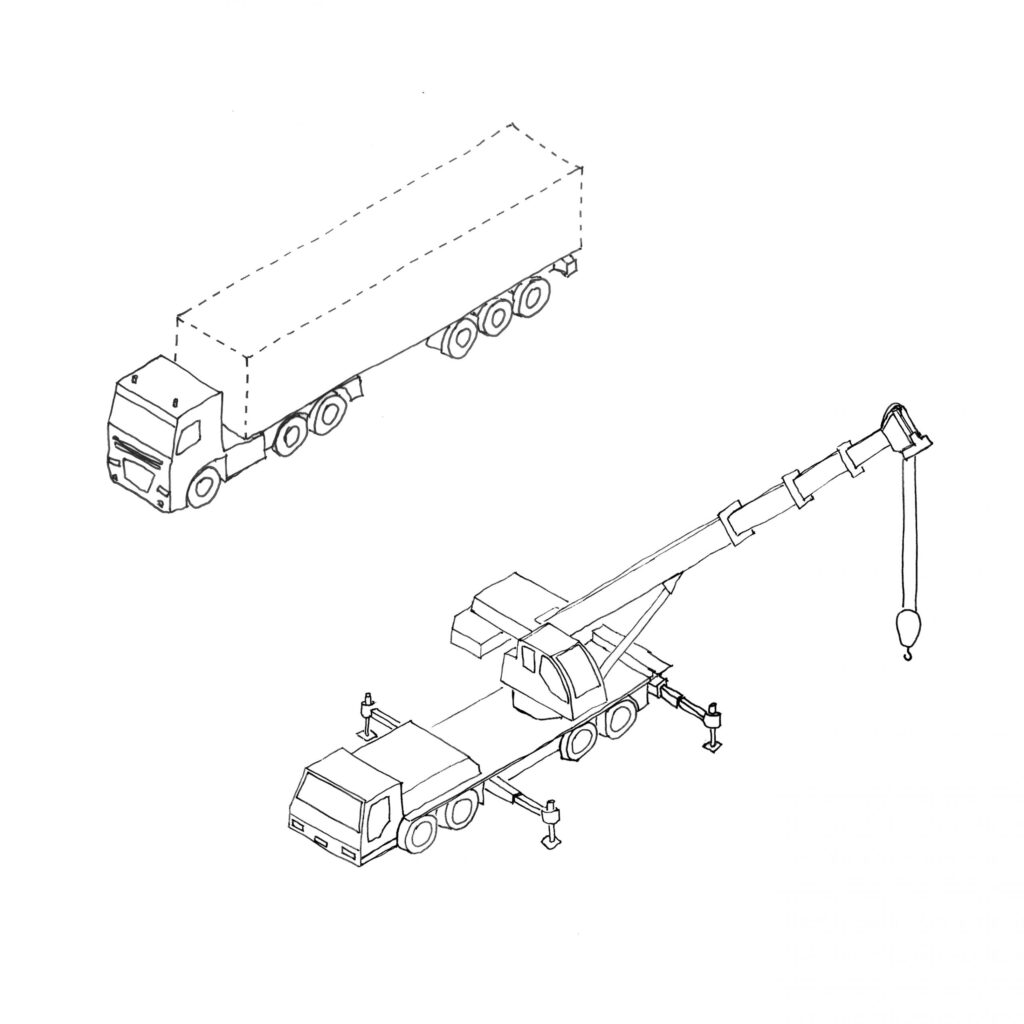
Deconstruction

The floors of the administrative wing are cut into parts of different sizes based on the cutting grid. Due to the shape of the original floor plan, the result was mainly parallelograms and trapezoidal shapes as well as some special shapes.


Assembling
Inspired by the game of tangram, first attemps of assembling the cut-out pieces where made. The carpet like structures with void areas here and there gave the inspiration to work with patio house typologies.

Reconstruction #1
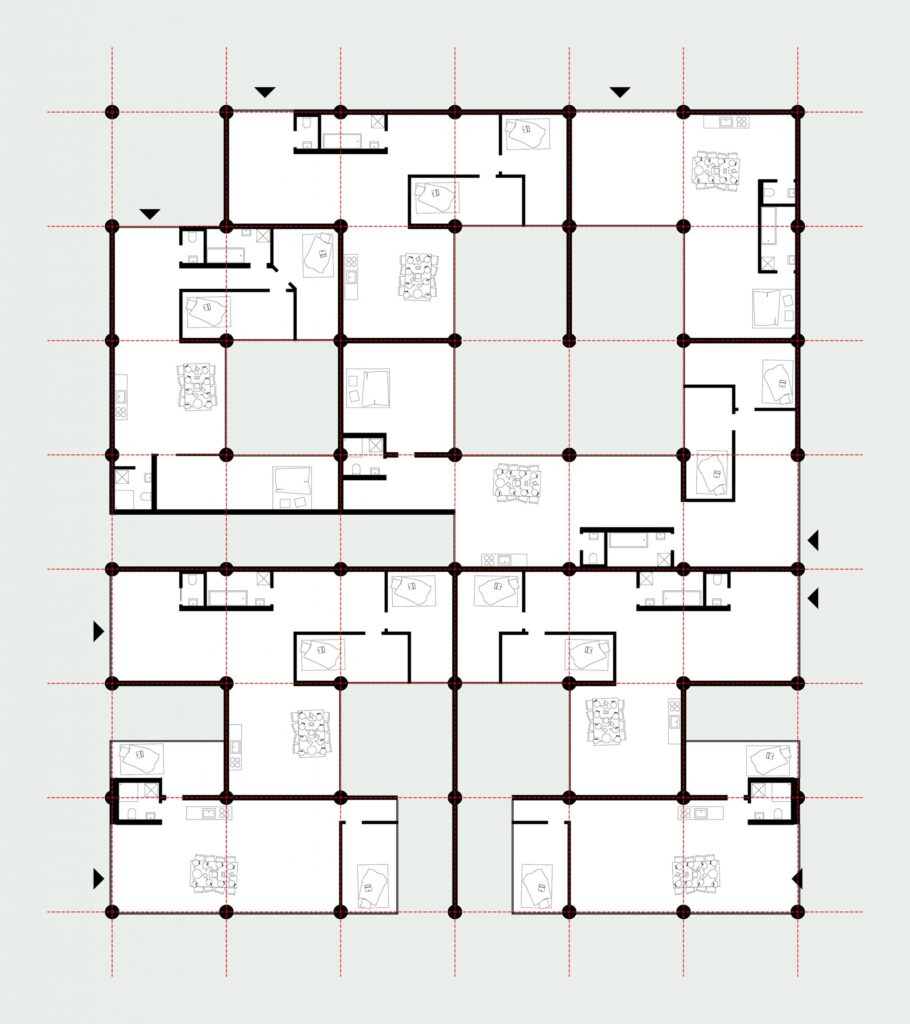


Based on a sketch of a patio-house typology, an initial attempt was made to rearrange the cut-out parts to form a reconstructed building. The attempt resulted in a one-story house with several residential units. However, some of the apartments were too large or had impractical corners and angles, so it was decided to plan the apartments and rooms more precisely and and to adjust the cutting-plan accordingly.
Fragments



Final Project
On a site on the outskirts of Ahlen, about 4.5km from the location of the town hall, an apartment building is to be constructed from the parts of the demolished Ahlen town hall.
For the building design, based on several previous test designs, a mixture of both precise planning for the layout of the future apartments and grid-based cutting of the existing building was applied. The design process was therefor influenced both from the deconstruction, as well as the reconstruction.



The resulting building is made from 440 parts from the town hall and includes 23 both one- and two-story apartments between 90m2 and 140m2. Due to the use of the recycled parts, each individual apartment has an individual floor plan.

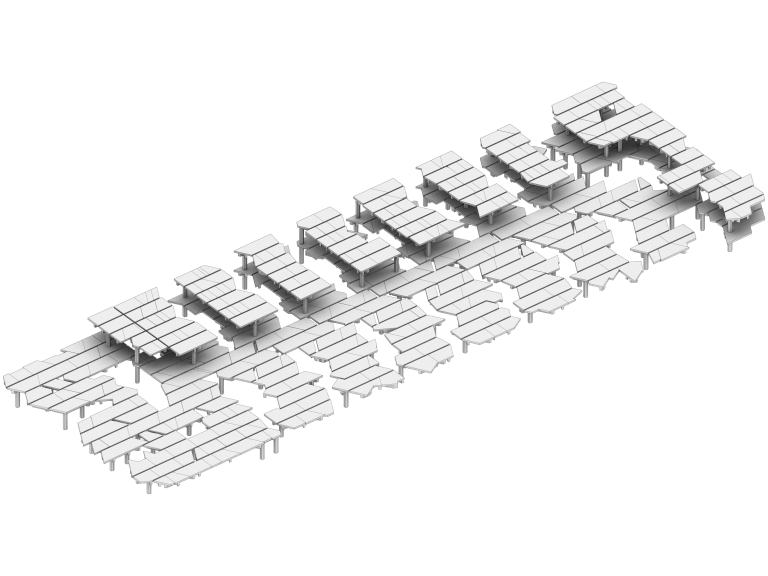
In accordance with courtyard house typologies, the individual apartments receive light and ventilation through narrow courtyards. This allows the building to be denser and the site to be used more efficiently, so that less ground needs to be sealed. At the same time, the courtyards, each located between two individual apartments, offer the possibility of communal use as a garden or meeting space for the inhabitants.

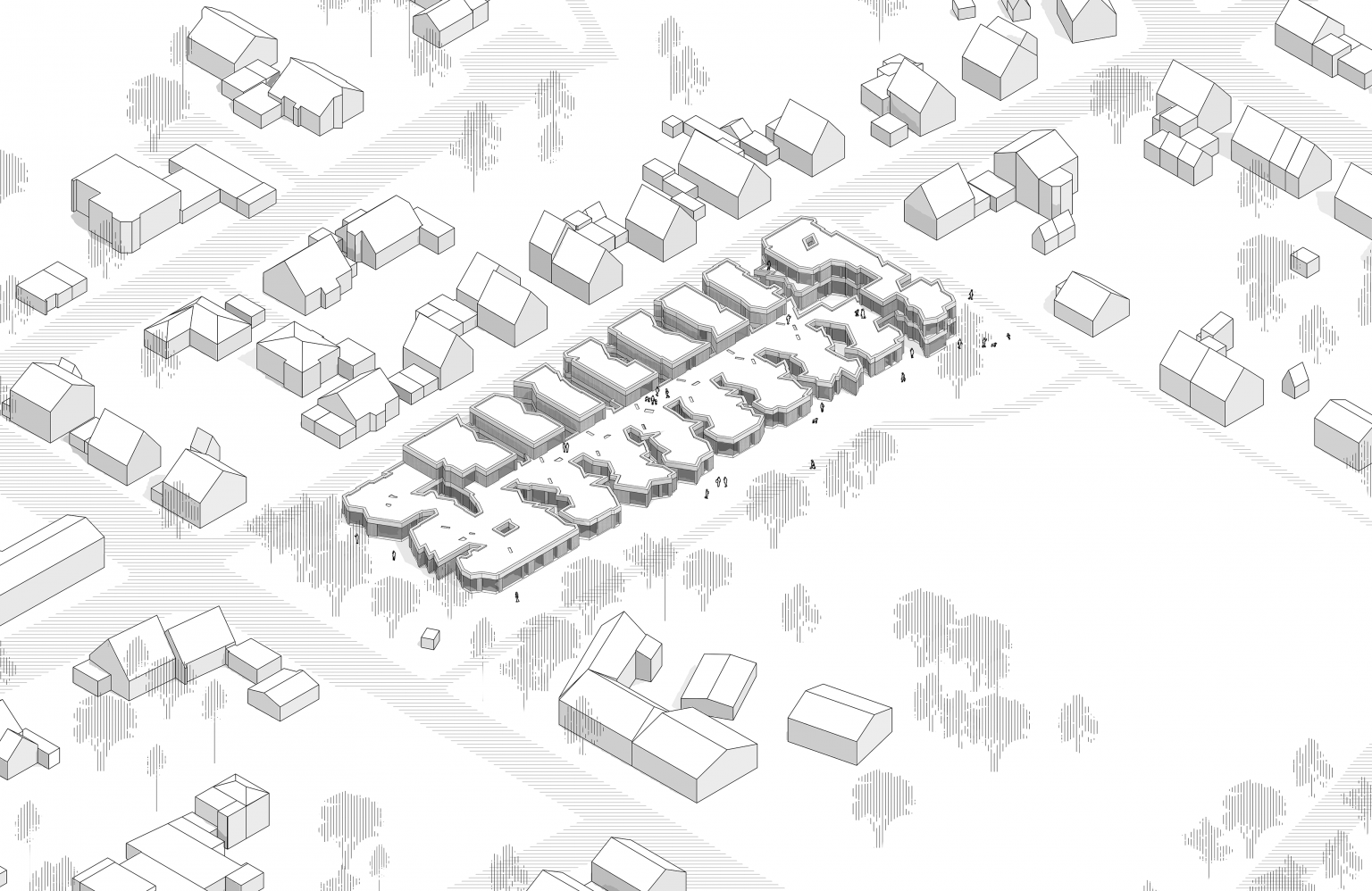


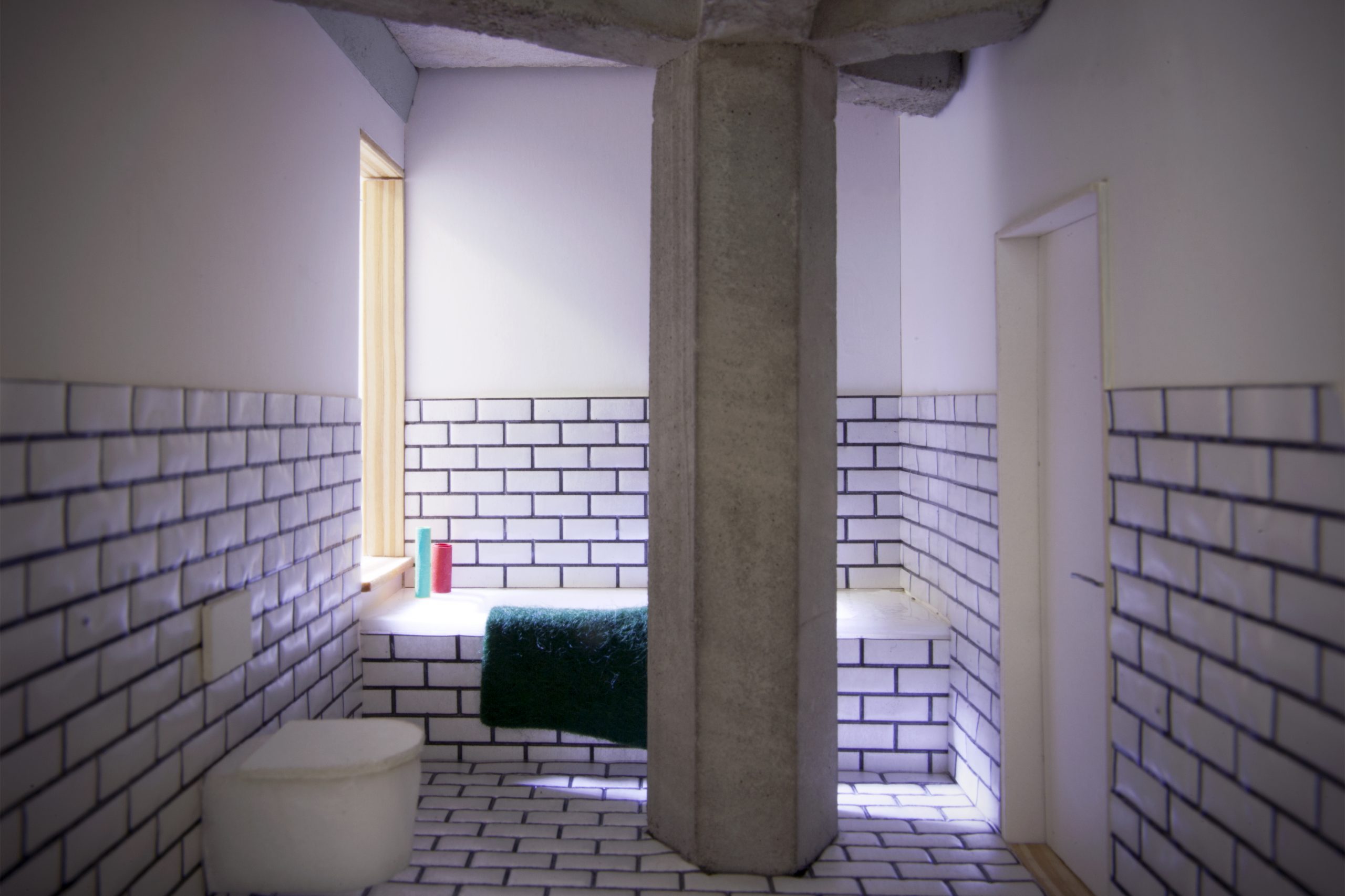


The exterior shape of the building is determined by the cut-to-size parts in the interior. The internal structure can be read from the facade with its zigzag-like projections.

The cut-to-size elements rest on a semi-precast reinforced concrete beam. By means of a subsequent reinforcement connection, the “old” parts and the “new” beam are friction-locked together.


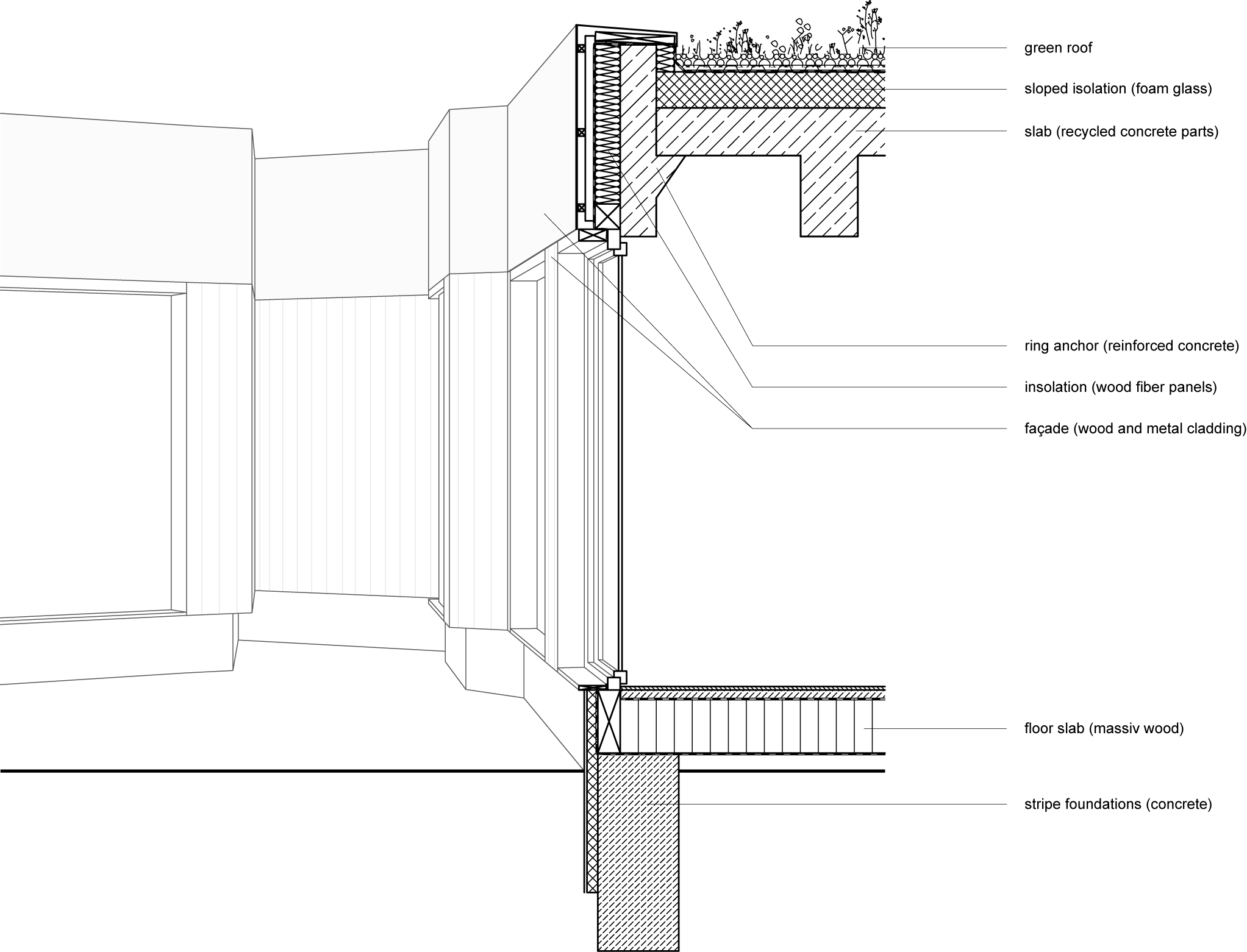
The reuse of reinforced concrete components makes sense not only from a resource and energy-saving perspective, but also from an architectural one. The apartments of the resulting building exhibit unexpected qualities in many places due to the use of the cut-to-size parts: angled floor plans as well as seemingly oversized columns create unusual yet attractive spaces. This type of architecture would very likely not have been created by conventional new construction planning. At the same time, the knowledge about the origin of the building fabric shapes the identity of the building and can thus create a special relationship between the residents and their house.
Name
Christoph Henschel
Year
2020
Type
Master Thesis
